What's New
Displaying results 3591 - 3600 of 4052
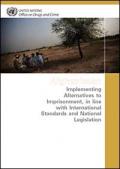
Resource | Publications,
The assessment provides a review of existing legislation, in terms of their provisions for non-custodial measures and sanctions, with particular focus on the provisions for offenders with mental healthcare needs, drug users, women, juveniles and first time non-violent offenders. It analyses information gathered in Kabul, as regards offences committed by some of these groups and sentences received, with a view to assessing the application of existing provisions for alternatives and potential for expanding the use of non-custodial sanctions and measures. It reviews the capacity of criminal justice institutions and services in the community, provided by the State and NGOs, to implement and support non-custodial measures and sanctions.
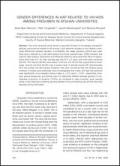
Resource | Publications,
This cross-sectional study aimed to describe the level of knowledge, perception/attitude, and practices related to HIV among 1,054 freshmen students in four Afghan universities differences between genders. A probability, two stage sampling method was used. Data were collected by a self administered structured questionnaire. SPSS software was used for data analysis. Descriptive and inferential statistics were performed. Most of respondents were male (72.1%), their average age was 20.1 ± 2 years, and most were unmarried (93.4%). The majority (90.8%) were aware of HIV but only 28.3% had a good level of knowledge. Around one-third (35.6%) had a positive level of attitude toward HIV. Approximately 30% had at least one risk practice; therefore, they were counted as high-risk behavior group members. Females were statistically more knowledgeable than males, and high-risk behaviors were significantly more prevalent among males; p = 0.01 and p = 0.001, respectively. However, general awareness, and attitude were not statistically different between genders. A considerable proportion of students (14.6%), as compared to peer-countries, were sexually active. A very high level of sharing injecting needles (4.5%) and shaving sets (20.8%) were also reported among informants.
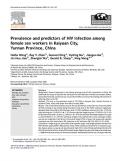
Resource | Publications,
Sexual transmission is the fastest growing route of HIV transmission in China. We undertook this study to describe the risk factors for HIV infection in female sex workers (FSWs), and to determine the commercial sex venues where FSWs are most at risk of being infected with or infecting others with HIV.

Resource | Guidelines,
In order to be effective, HIV/AIDS prevention and care programmes must address the broader factors that make people vulnerable to HIV/AIDS. Human rights abuses, stigma, discrimination and marginalisation stand in the way of people obtaining HIV/AIDS-related information, the means to prevent HIV infection, as well as care, treatment and support.

Resource | Publications,
Bhutan is recognised as being a low prevalence nation for HIV. Although information on HIV/AIDS in Bhutan is limited there is data available from passive case reporting, a few studies and sentinel sero-surveillance conducted through government health care services. All data confirm that HIV prevalence is still low and the estimated numbers of HIV positive people are approximately 100. Information from the passively reported cases suggest that heterosexual contact is a leading cause of HIV transmission.
This report presents the findings and conclusions from the general population behaviour survey that was conducted between March and June 2006 among 3235 males and females between 15-49 years from urban and rural Bhutan.
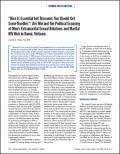
Resource | Publications,
Research from around the world has suggested that married women’s greatest risk for contracting HIV is from having sexual intercourse with their husbands. On the basis of 6 months of ethnographic research in Hanoi, Vietnam, this paper argues that the contemporary nature of the HIV epidemic in Hanoi is shaped by 3 interrelated policies implemented in 1986 as part of the government’s new economic policy, Doi Moi (Renovation). Together, these policies structure men’s opportunities for extramarital sexual relations and encourage wives to acquiesce to their husbands’ sexual infidelity, putting both at risk of HIV. The study proposes 4 structural intervention strategies that address the policies that contribute to men’s opportunities for extramarital liaisons and to marital HIV risk.
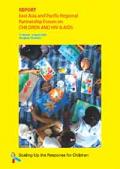
Resource | Publications,
Children have been called the missing face of HIV and AIDS. While countries and regions have marshaled resources to respond to the HIV epidemic, children and young people infected and affected by HIV and AIDS have received little, if any, attention. In March 2006, participants in the three day East Asia and Pacific Regional Consultation on Children and HIV & AIDS, held in Hanoi, Viet Nam, issued the ‘Hanoi Call to Action’. It appealed to national and regional leaders to put children firmly on the agenda in their HIV response. Two years later, many of those who attended the Hanoi consultation gathered in Bangkok to take stock of what progress had been made and what gaps still existed in efforts to protect, treat and care for children infected and affected by HIV and AIDS in the East Asia and Pacific region.
Convened by the UNICEF East Asia and Pacific Regional Office, the Regional Partnership Forum on Children and HIV and AIDS (or “Forum”) brought together 133 representatives from 17 countries and organizations. The forum was held from 31 March to 2 April 2008 at the Imperial Queen’s Park Hotel in Bangkok, Thailand.
This report highlights the substantial inputs and discourses made during the three-day Forum. It outlines several action points that aim to minimize the impact of HIV and AIDS on children and young people and to prevent the continuing spread of HIV by protecting children and young people from a host of vulnerability and risk factors that drive the spread of HIV in the region.
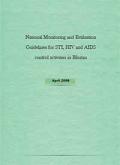
Resource | Publications,
The overall goal of the National Strategic Plan (NSP) for HIV/AIDS and STI in Bhutan is to achieve the Millennium Development Goal (MDG) of reversing and halting the spread of HIV and AIDS by 2015. Five priority strategies have been developed:
1. Enhancing the prevention of STI and HIV transmission,
2. Enhancing access to treatment, care and support for people living with HIV and AIDS (PLWHA),
3. Creating a supportive environment for women and men living with or affected by HIV and AIDS,
4. Creating and enabling environment for successful implementation of the national response to HIV, AIDS and STI,
5. Generating strategic information for evidence-based action.
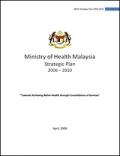
Resource | Publications,
The Ministry of Health, being the lead agency in health provides leadership on matters relating to health and also sets the direction for health care development in the country. During the Ninth Malaysia Plan period (2006 – 2010), efforts will be undertaken to consolidate health care services, enhance human resource development and optimize resource utilization.
The Strategic Plan for Health is a summary of the Country Health Plan, which was developed for the Ninth Malaysia Plan (NMP). It is intended to be a quick reference for all programmes, institutions and state departments under the Ministry of Health to ensure that all activities and resources are directed towards similar goals.

Resource | Presentations,
Behavioral sentinel surveillance (BSS) provides the descriptive epidemiology of sexual behaviors among the most-at-risk groups. BSS 2007 is the seventh round of BSS. The objectives of the BSS 2007 are:
- Provide specific specific-year information on socio-demographic and risk behavior related to HIV/ STIs.
- Monitor sexual behavior of risk groups from year to year and to examine trends in behavior change in high risk groups.





